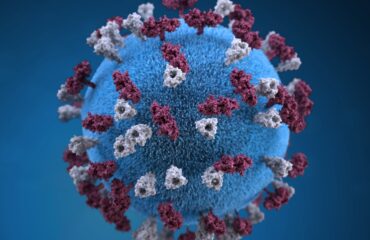What is DHA? Why do you need to eat DHA, and so much of it for that matter? How does DHA help us? Where can you find quality DHA sources to consume?
Nutrition can be a complex adventure to understand what is essential, unnecessary, and what works for you. One of the essential nutrients that you need in your diet for optimal health is DHA. What is DHA? Why do you need to eat DHA, and so much of it for that matter? How does DHA help us? Where can you find quality DHA sources to consume? Arguably, these four questions and their answers will help you understand the importance of DHA in a nutrition regimen.
What is DHA?
DHA, docosahexaenoic acid, is an essential omega-3 fatty acid. (Horrocks, Yeo, 1999) You presumably have read a label on a bottle of fish oil and seen fish oil, EPA, and DHA values in milligrams. The quality of a bottle of fish oil will be determined by the fish source and also by the amount of DHA in a serving size. Naturally, since DHA is the superior in need to EPA, it is usually the lesser of the two. This helps keep the price of fish oil supplement’s lower as well. One thing to keep in mind, DHA that is in the supplementation form, a fish oil soft gel, usually is not in the SN-2 position, but more likely in the SN-1 position. What does that mean? Here’s today’s science lesson for you. DHA can be attached to a glycerol backbone in three different positions. See the diagram below.

image from wikipedia: https://en.wikipedia.org/wiki/File:Eie-TRIGLYCERIDE.jpg
DHA that is found in its natural form, seafood, will be in the SN-2 position, but not always in fish oil supplements. (Litchfield 1968) (Ando et al., 1996) This is important to know because DHA in the SN-2 position yields many more benefits for brain health than DHA in the SN-1 position. That does not mean you should cut out your fish oil supplements, supplementation is far better than none at all.
Benefits of consuming DHA in the SN-2 position include, but are not limited to: DHA being more bioavailable to you (Christensen et al., 1995), SN-2 is the most stable position of the three (Wijesundera et al., 2008), and SN-2-DHA is more effectively incorporated into your nervous system than SN-1 positioned DHA (Lagarde et al., 2001). DHA in the SN-1 position has its own benefits, but regarding your brain, eyes, and nervous system SN-2 positioned DHA is superior.
Why should you consume DHA in your nutrition regimen?
Well, if you value your brain health then you should consume very large amounts of DHA. Similarly, if you live in or near a major city with an overloaded environment of non-native electromagnetics frequencies (nn-EMF) and artificial light then it is imperative to consume even more DHA. Man made blue light is a form of nn-EMF. Living and working indoors exposes you to this nn-EMF while diminishing your DHA stores. Unless you live in a very rural area, you’re camping in the middle of the woods, you’re in a national park, or you make a point to do life outside…this is you. Just ask Verizon, your 4G network is pretty much everywhere…soon to be 5G (yes, it will only get worse). Today we live in a microwaved world. The need for replenishing DHA stores has never been higher.
DHA is required for maintenance of normal brain function in an adult brain.
For babies and children, it is even more important to consume DHA to develop a healthy brain. You may consume other essential fatty acids in your diet, however; DHA is taken up by the brain foremost above any other fatty acid! Why should you be concerned with eating so much DHA? The turnover of DHA in the brain is extremely rapid, which is why you need even more than you realize. Researchers are beginning to understand just how fast the turnover is and why. DHA in the retina, your eye, is destroyed by blue light frequencies. Woah! You would think this would be more mainstream knowledge, considering what a big deal this is!! We are surrounded by blue light frequencies. Artificial light creates uncoupling of light cycles from the cell cycle and metabolism, it destroys DHA and melatonin levels in humans very quickly. (Kruse, 2016) When the light cycles and the time clocks of your cells and organs are uncoupled, due to excessive nn-light, this becomes very dangerous to your health and master clock. This is when confusion within you sets in. Since most of the environment’s you exist in today consist of excessive blue light and nn-EMF it is important to understand the cascade effect the lack of DHA can have on your wellbeing and longevity.
DHA has a rather impressive list of health benefits.
The diseases alone that DHA has a positive effect on include, but are not limited to: hypertension, arthritis, atherosclerosis, depression, type II diabetes, myocardial infarction, thrombosis, and many cancers. DHA has amazing anti-inflammatory properties. Any type of stress response will create some sort of inflammation in your body. Your body is constantly under large amounts of stress whether it be: physically, emotionally, or most predominantly environmentally. DHA helps resolve and combat the stress/inflammation responses. How awesome is that! DHA allows the cells in your body to power up electrons with photons. (Kruse, 2016) You will start to see a pattern in these wellness blogposts…it all goes back to light! DHA allows light that is taken in through your eyes to be turned into electrical signals in your cell membranes throughout your entire body, but especially in your brain. DHA and light is crucial for proper cell communication within and between each other. It is the ONLY lipid, fat, that can turn light into a direct electrical current and vice versa. (Kruse, 2015) It is excellent brain food!
Consuming DHA is the best, or one of the best, preventative measures you can take nutritionally to protect your nervous system and brain health.
As I mentioned above DHA is a key player in your internal clocks. Those internal clocks can determine your aging. If they become slowed down or sped up it can start to affect other age-related functions; such as, your memory, vision, and cell to cell communication. DHA will also affects your oxidation. Consuming large amounts of DHA improves your redox potential and therefore giving your body a better chance to combat negative environmental stressors.
At this point, you may have just read a lot of new information about DHA that you never even knew existed or could fathom how it could impact your wellness. My hope is that I have been able to make it simple enough for you to understand, yet informative enough that you grasp the importance. To wrap this up, let’s discuss where you can find quality sources of DHA to consume.
The best DHA sources come from nature.
Let’s define nature. Nature means wild and free range. The highest amounts of DHA are found in fish, seafood, and roe (fish eggs or caviar). Here is a list of fish and seafood that will provide you with DHA. Listed from greatest amount of DHA per gram to the least amount:
- Salmon
- Herring
- Mackerel
- Anchovies
- Sardines
- Shark
- Trout
- Swordfish
- Mussels
- Sea Bass
- Pollock
- Whiting
- Flat Fish such as Flounder or Sole
- Lobster
- Halibut
- Carp
- Oysters
- Crab
- Tuna and Mullet
- Perch
- Snapper
- Shrimp
- Haddock
- Eel
- Catfish
- Cod
- Pike and Northern
Sources of seafood and fish that grow naturally in the wild will have more DHA than farmed. Environment is everything, it trickles down to affect even our food source quality and nutritional value. Eggs also provide us with DHA in smaller amounts too. Same thing: cage free, free range, and organic eggs will have higher amounts of DHA in their yolks than factory farm eggs. A chicken egg yolk will typically have between 60-70 milligrams of DHA. In comparison, three and half ounces of salmon contains over TWO GRAMS of DHA and EPA. Seafood wins. If you consume grassfed meat it will also contain DHA.
DHA is vital for your optimal health. Ideally you should to consume large quantities of DHA daily, because of the environment that we live in today.
DHA helps you maintain your cognitive function, prevent neurological and visual impairments, promotes proper aging, and increases your redox potential. Most importantly, proper DHA stores allow light to be turned into electrical signals within you to allow for cell to cell communication.
There are plenty of amazing sources of DHA at your fingertips to enjoy. Incorporate a wide array I have mentioned to start optimizing the benefits of DHA in your own life.
If you’re lacking creativity in the kitchen or want to mix it up, visit our Recipe Page to find some awesome seafood recipes!
References:
Ando, Y., Ota, T., Matsuhira, Y., & Kazunaga, Y. (1996, April). Stereospecific analysis of triacyl-sn-glycerols in Docosahexaenoic aci. Retrieved May 10, 2016, from http://link.springer.com/article/10.1007/BF02523923
Bandarra, N. M., Lopes, P. A., Martins, S. V., Ferreira, J., Alfaia, C. M., Rolo, E. A., . . . Gail-Guerrero, J. L. (2016, January 5). Docosahexaenoic acid at the sn-2 position of structured triacylglycerols improved n-3 polyunsaturated fatty acid assimilation in tissues of hamsters. Retrieved May 08, 2016, from http://www.ncbi.nlm.nih.gov/pubmed/27101763
Christensen, M. S., Hoy, C. E., Becker, C. C., & Redgrave, T. G. (n.d.). The American Journal of Clinical Nutrition. Retrieved July 29, 2016, from http://ajcn.nutrition.org/content/61/1/56.short
Denomme, J., et al ., Directly Quantitated Dietary (n-3) Fatty Acid Intakes of Pregnant Canadian Women are Lower than Current Dietary Recommendations. Human Nutrition and Metabolism. 135(2): 206-211, 2005.
Dietary Sources of Omega-3 Fatty Acids. (n.d.). Retrieved July 29, 2016, from http://www.dhaomega3.org/Overview/Dietary-Sources-of-Omega-3-Fatty-Acids
Horrocks, L. A., & Yeo, Y. K. (1999, September 4). Health benefits of docosahexaenoic acid (DHA). Retrieved May 08, 2016, from http://www.ncbi.nlm.nih.gov/pubmed/10479465
Kris-Etherton, P.M., et al. Polyunsaturated fatty acids in the food chain in the United States . AJCN. 71: 179-188, 2000.
Raper, N.R., et al . Omega-3 fatty acid content of the US food supply. J. Am. Coll. Nutr. 11: 304-308, 1992.
Kruse, J. (n.d.). UBIQUITINATION 4: UBIQUITIN’S CONNECTION TO LIGHT – Living an Optimized Life. Retrieved July 29, 2016, from https://www.jackkruse.com/ubiquitination-4-ubiquitins-connection-to-light/
Kruse, J. (2015, March 13). UBIQUITINATION 7: PALEO’s BITTER TRUTH – Living an Optimized Life. Retrieved August 12, 2016, from https://www.jackkruse.com/ubiquitination-7-paleos-bitter-truth/
Litchfield. (1968). Predicting the positional distribution of docosahexaenoic and docosape. Retrieved May 10, 2016, from http://link.springer.com/article/10.1007/BF02531280
Picq, M., Chen, P., Perez, M., Michaud, M., Véricel, E., Guichardant, M., & Lagarde, M. (2010). DHA Metabolism: Targeting the Brain and Lipoxygenation. Retrieved July 29, 2016, from http://www.ncbi.nlm.nih.gov/pmc/articles/PMC2894371/
Williams, C. M., and Burdge, G. Long-chain n-3 PUFA: plant v. marine sources. Proceedings of the Nutrition Society. 65:42-50, 2006.







